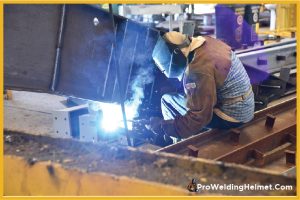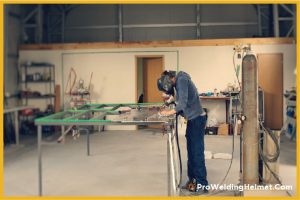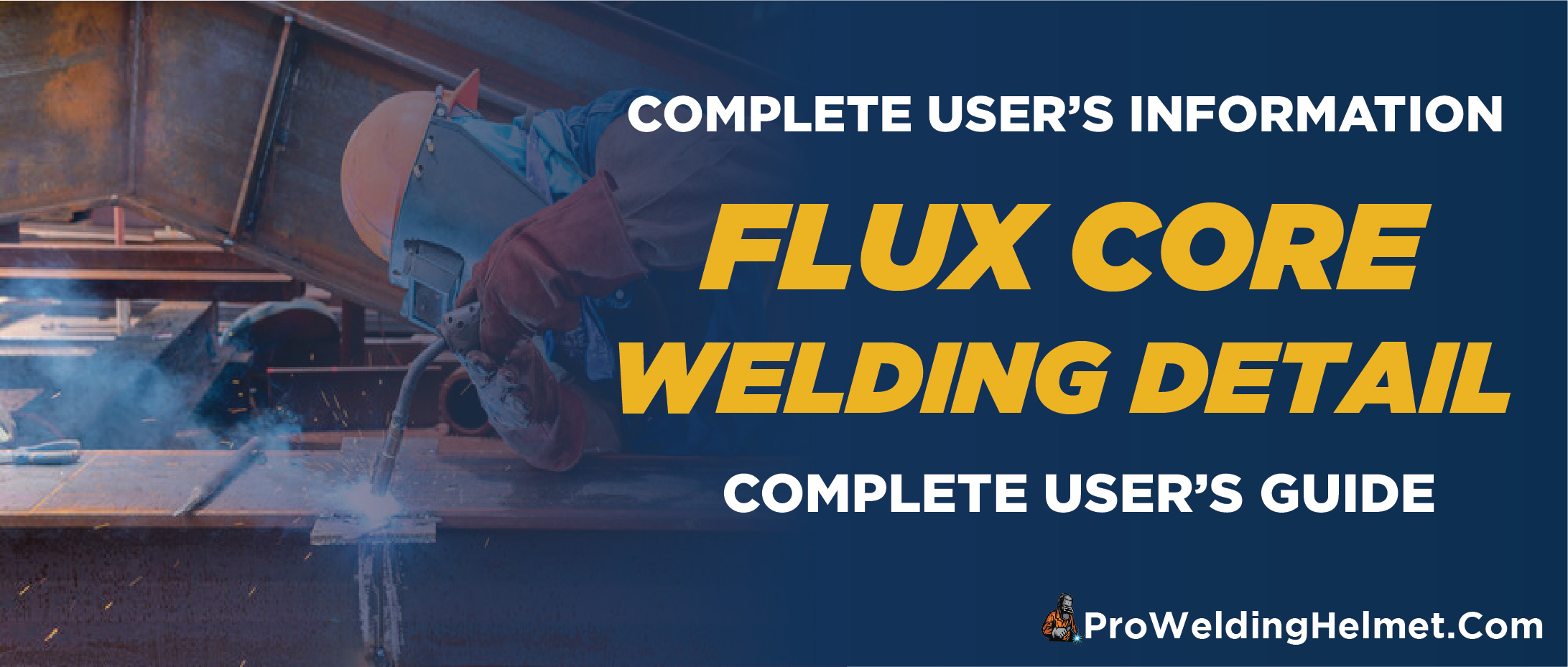Contents
Flux Core Welding History
Since its invention in the 1950s, Flux Core Welding has become a key manufacturing component. It produces solid and reliable welds and protects materials from corrosion and oxidation during manufacturing.
Historically, Flux Core Welding has been utilized to join dissimilar metals, a process that requires specific skill sets and knowledge.
Flux Core Welding emerged as one of the oldest methods for joining metals, dating back to sometime during the Bronze Age. Abrasive tools were used to shape and prepare a metal object, and molten flux was employed to promote a superior joint bond.
Since its development in ancient times, Flux Core Welding has experienced advancements alongside technological developments throughout history, from clay crucibles and copper tools in antiquity to much more advanced forms of equipment such as arc welders today.
It is a critical milestone in developing modern industry and infrastructure, spurred by its increasing cost-effectiveness, extensive versatility, and little need for heat.
Various types of Flux Core Welding are now among the most popular methods of connecting metal colors in numerous industries — from basic construction to aerospace engineering.
What is Flux Core Welding
When it comes to welding, Flux Core Welding is an essential technique that ensures a secure and lasting join.
Over the centuries, people have developed multiple techniques for this welding process, yet Flux Core Welding stands apart for its reliability in joining metals of all types.
This type of process can be invaluable for professionals seeking strength and durability when working with metal products, as success relies largely upon skillful execution from experienced welders who understand the nuances involved with waxed-flux and bare-flux welds.
In this blog post, we will explore everything from the basics of Flux Core Welding to best practices utilized by seasoned pros — so you can bring your metalworking projects to fruition with confidence!
Flux Core Welding Process

Flux Core Welding is an arc welding process that relies on various materials — usually flux, metal wire, and low-amperage electricity — to join two pieces of metal together.
The technique works by melting the base metal using electric current while simultaneously using heat generated from the arc to melt a filler material (known as the flux) to form strong bonds between both surfaces.
The flux is typically made up of various ingredients, including silicates, metal oxide particles, and other elements that help protect against oxidation during welding.
When exposed to heat, these components react and become more liquid-like – forming a molten pool that acts as a protective layer for both metals being welded. It also helps to create a stronger joint bond when the metal cools down.
Flux core welding is mainly used with ferrous metals such as steel and stainless steel, but it can also apply to other materials.
Welding Tips & Best Practices

Flux Core Welding requires skill, practice, and a lot of patience. The best way to become an expert is by gaining experience through trial and error — but some tips will help you get started:
- Use the correct type of flux for your metal – each metal reacts when exposed to heat, so using the proper change can make a big difference in your results.
- Wear safety gear – sparks fly when welding and can burn skin, eyes, or hair if not adequately protected with the appropriate PPE (Personal Protective Equipment).
- Choose the proper amperage setting – too much current can cause excessive warping on thin materials, while insufficient wind may not provide an adequate bond.
- Practice good technique – learn the basics of arc welding and pay close attention to detail for best results.
- Clean your work area – remove any grease, oil, or debris before you begin your project to ensure a secure joint that won’t be compromised by foreign particles later.
Flux Core Welding is an invaluable skill set for anyone looking to take up metalworking as a profession — but it can also be rewarding and fun for hobbyists looking to learn something new! With practice, patience, and suitable materials, you, too, can master the art of Flux Core Welding!
Advantages Of Flux Core Welding
There are several advantages to Flux Core Welding that make it an ideal choice for many manufacturing applications.
Some significant benefits include the following:
- It offers cost-effectiveness, speed, and convenience in comparison with other methods of welding;
- It provides superior strength and corrosion resistance;
- It has a low need for heat, making it suitable for sensitive surfaces;
- Its ability to join various types of metals makes it versatile;
- It requires less equipment and fewer supplies than other welding methods.
As such, Flux Core Welding is a trendy choice for many projects in industrial and commercial settings — particularly those requiring specific skill sets and knowledge. The right approach can be used to deliver reliable results that last for years.
Disadvantages Of Flux Core Welding
Although Flux Core Welding offers multiple advantages compared to other techniques, there are also some disadvantages associated with the process. These include:
- The improper use of flux can lead to contamination in the weld;
- Flux-cored wires may require frequent changing if welding inconstant currents;
- Poor quality flux can cause porosity in the weld;
- It can be challenging to remove slag from the finished product.
Flux Core Welding is a powerful and reliable technique for joining metals. But it’s important to remember that success relies upon skillful execution from experienced welders who understand the nuances of waxed-flux and bare-flux welds.
With proper preparation and precise techniques, however, this process can create strong bonds that last for years to come.
What are Waxed-flux And Bare-Flux Core Welding

Waxed-flux and bare-Flux Core Welding are two distinct types of Flux Core Welding. It is because the flux composition and application methods can differ depending on the type of weld being made.
In waxed-Flux Core Welding, a thin layer of wax is applied as a coating over the filler material before it’s melted into place.
It helps to reduce spatter and increase cleaning time after the weld is complete, resulting in smoother and more attractive results.
Bare-Flux Core Welding does not require additional materials — only the thin layer of flux that comes with the wire is used for this process.
As such, it tends to be faster and requires less preparation, but it can create more slag on the finished product.
Both techniques can use effectively when welding ferrous metals together and are typically chosen based on the project’s desired outcome.
It’s important to remember that experience and expertise are essential for successful results with either method.
Flux Core Welding Equipment
In addition to a thorough knowledge of the welding process, welders also need the right equipment for Flux Core Welding. Some essential supplies include:
- A welding power supply;
- The appropriate type of electrode gun;
- An appropriate shielding gas (for gas-shielded arcs); and
- Protective gear such as face shields, gloves, and jackets.
It’s also essential to use quality electrodes explicitly designed for flux core applications — otherwise, you may end up with a poor-quality weld that is weak or prone to cracking.
Additionally, it’s beneficial to invest in quality materials that won’t corrode over time — this will ensure your finished weld is solid and durable.
Safety should be a priority when it comes to welding. Therefore, ensure you’re aware of the risks and take appropriate safety measures to protect yourself.
It includes wearing suitable clothing and protective gear, as well as having adequate ventilation in the area where you are working.
Following these guidelines will help ensure your safety throughout the entire process.
Flux Core Welding is an essential technique for joining metals — but that can not be taken lightly.
Experience and expertise are crucial when using this method, so taking time and practicing the necessary skills before attempting any significant projects with Flux Core Welding is essential.
With proper preparation and attention to detail, this powerful technique can create strong and lasting bonds between metals.
Conclusion
Flux Core Welding is a powerful and reliable technique for joining metals that can yield solid and attractive results when done correctly.
But it’s essential to have the proper knowledge, equipment, and safety measures before attempting this method.
With experience, expertise, and plenty of practice, Flux Core Welding can be used to create welds that are both strong and aesthetically pleasing.
